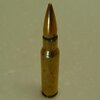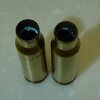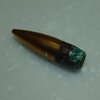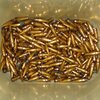CoalCrackerAl
Member
I started my transfer of ammo i sitting in the flats that come in ammo boxes. To my new ammo cans. Some of it is corroded. I pulling them as i find them. Some even had corrosion on the inside of the casings. Some had a white/grey fuzz like stuff too inside. Has me puzzled how the insides got it.
I checked what i have in the MTM ammo flats with a lid. They are are ok. Another question. How many of them descant packs should i put in the cans? I have some that came in medicine bottles and ones that came in scope boxes.
I checked what i have in the MTM ammo flats with a lid. They are are ok. Another question. How many of them descant packs should i put in the cans? I have some that came in medicine bottles and ones that came in scope boxes.







